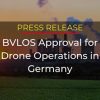In Florida, the Atlantic hurricane season – roughly from June to November – is the time of year that utility companies dread. What’s more, in recent years the number and severity of storms have increased. In 2019 alone, there were 20 tropical storms (compared to just 16 in the previous year) that caused 107 deaths and over $11 billion in damage to property across the region.
Florida Power & Light (FPL) – one of the largest energy companies in the United States – knows a lot about emergency response to service interruptions owing to storm damage. In 2018, Hurricane Irma knocked out power to 90% of FPL’s 5 million customer households and businesses. And just last year, 160,000 customers in FPL’s service area lost power due to Hurricane Dorian. The total price tag of damage to FPL’s infrastructure from Dorian’s powerful winds topped $274 million.
To prepare for worsening storm seasons and further streamline their emergency response, FPL initiated a number of dramatic steps, including a massive $35 billion power line burial program. Moreover, FPL turned to advanced technologies to enable the company to more quickly identify the sources of power outages in its estimated 119,000 km of transmission lines, as well as numerous power generation facilities and substations. Among the technologies FPL adopted were Percepto’s autonomous drones.
Percepto Autonomous Drones in FPL
To better monitor their power production infrastructure, FPL initially deployed two Percepto Sparrow drone-in-a-box solutions on-site in their Next Generation Clean Energy Center in Martin County, Florida.
Previously experienced with piloted drone solutions, FPL chose Percepto’s autonomous drones because they enable 24/7 real-time monitoring of service events like power outages. Moreover, the Percepto solution is safer, faster, more efficient and more economical to operate than traditional inspection methods – notably piloted drones.
As Michael Dorr, a senior FPL drone pilot, mentioned in a recent interview with a local news station with Percepto “we’re able to quickly deploy…instead of charging batteries, getting all our gear, and traveling to the site.
Percepto’s system is approved by the FAA for flights two miles Beyond Visual Line of Sight (BVLoS) and FPL’s waiver from the FAA allows them to leverage this capability. This enables the Percepto Sparrows to cover the entire Martin County facility with regular, pre-programmed autonomous flights over the plant’s 11,000 acres. The Percepto drones stay above 130 feet to avoid power poles and other obstructions.
Michael Dorr agrees that Percepto’s capability is invaluable. “For a utility to be able to see our infrastructure in areas where we can’t get to safely…to quickly fly over it and understand what our conditions are…” is something FPL couldn’t previously achieve.
Prior to their installation at the FPL facility, the Percepto drones were independently tested at a wind tunnel at Florida International University at speeds of up to 150 miles per hour. The idea was to ensure that the autonomous drones could begin helping power restoration immediately after a storm, even in relatively windy conditions – identifying which electrical poles or wires are down, and helping better task and manage both crews and equipment.
The Bottom Line
FPL adopted Percepto’s autonomous drones to speed emergency response and restore service faster and with less risk to crews. During routine operations, they’re also leveraging the Percepto solution to maximize maintenance efficiency – continuously yet cost-effectively monitoring mission-critical components. By the end of the year, FPL will roll out two more Percepto-enabled sites on the Treasure Coast, one in St. Lucie County and another in Vero Beach. Ultimately, the company plans to deploy autonomous drones at all of its substations, too.





